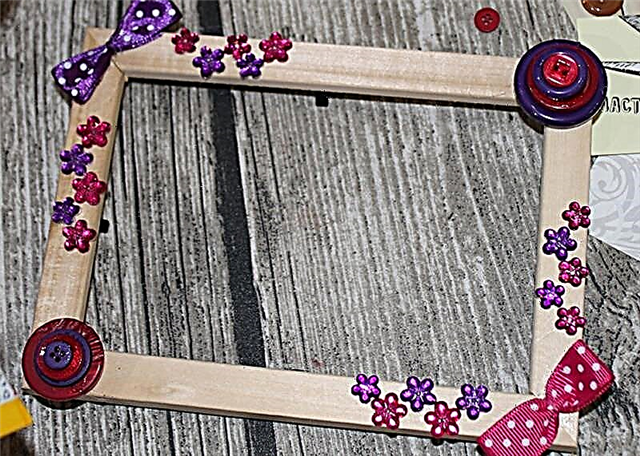Share
Pin
Tweet
Send
Share
Send
A set-in sleeve may consist of one or two parts. You can learn how to prepare and embroider such a sleeve in a simple and accurate way.
 At the request of the members of the forum, this master class appeared. Thanks to everyone who encouraged me to create it!
At the request of the members of the forum, this master class appeared. Thanks to everyone who encouraged me to create it!The set-in sleeve can be single-seam and two-seam.
If the fabric with which you work is heavy or excessively soft, loose, then the armhole line needs to be strengthened with glue pad or iron the non-woven fabric band-thin glue strip cut along the oblique with a chain stitch in the middle. Gasket materials can be found at the Burda store. Ironing should be done by placing the chain stitch exactly along the marking of the seam line of the armhole. Correction patterns.
Check the sleeve pattern to make the necessary changes. Typically, the length of the sleeve should end at the bone on the wrist, and the width should be 5 cm greater than the volume of the upper arm for freedom of movement.
Read the description for your model: information on the presence / absence of shoulder pads.
Be careful, if you are adjusting the sleeves, then be sure to adjust the armhole and vice versa.
Podokatnik.
The window sills support the weight of the kukawa fabric and help keep the sleeve beautifully descending from the shoulder seam. With their help, the sleeve seam does not stand out.
To make this part, use sharp scissors (buy at the Burda store) to cut an oblique rectangle of wool flannel or thin padding polyester 7.5 cm wide and 10-15 cm long for each armhole. On a long edge, make a fold 2.5 cm deep. Place the fold in the center along the seam line, the wider side should be closer to the sleeve, and the raw edges inside the sleeve hem. Sew the window sills with hidden stitches.

 Sleeves sit especially well if they are “knocked out” by Volumenvlies 248 volumetric gasket. Draw an auxiliary gasket line along the okat (see photo). Copy as a separate part. For this pattern, cut the Volumenvlies gasket without seam allowances. Then, using the same pattern, cut out a strip of adhesive non-woven with the same direction of the shared thread as on the sleeve: at the upper cut with an allowance for the seam, the lower cut is 1.5 cm shorter than the pattern. Put the gasket from Volumenvlies on the wrong side of the sleeve, glue the gasket on it and twist it.
Sleeves sit especially well if they are “knocked out” by Volumenvlies 248 volumetric gasket. Draw an auxiliary gasket line along the okat (see photo). Copy as a separate part. For this pattern, cut the Volumenvlies gasket without seam allowances. Then, using the same pattern, cut out a strip of adhesive non-woven with the same direction of the shared thread as on the sleeve: at the upper cut with an allowance for the seam, the lower cut is 1.5 cm shorter than the pattern. Put the gasket from Volumenvlies on the wrong side of the sleeve, glue the gasket on it and twist it.Making the sleeves ok.
A special property of a sleeve is that its top (okat) needs to be positioned exactly on the shoulder, before embroiding the entire sleeve in the armhole. Since the sleeve has a curly shape, and is longer than the armhole, it must be attached.
 Sew one row of sewing stitches next to the seam line inside the seam allowance. Run the second row at a distance of 5-6 mm from the first, also within the allowance.
Sew one row of sewing stitches next to the seam line inside the seam allowance. Run the second row at a distance of 5-6 mm from the first, also within the allowance.Start shaping the sleeves around the sleeve, pull the filaments slightly, pulling the extra width to the area around the sleeve.

 Fold the front sides, align the front sides, align all the marks and stick the sleeve into the armhole, first combining the seams and marks, and then distributing the width between the pins. Tie the threads to secure the assembly to the eyelet. Sweep the sleeve on your hands to prepare the product for fitting.
Fold the front sides, align the front sides, align all the marks and stick the sleeve into the armhole, first combining the seams and marks, and then distributing the width between the pins. Tie the threads to secure the assembly to the eyelet. Sweep the sleeve on your hands to prepare the product for fitting.Sleeve placement.
Try on the product with the recommended shoulder pads and check the fit of the sleeve using a colored hinge as a guide. There should be no wrinkles, wrinkles, or lumps on the sleeve.
Cuffing the sleeves.
 If you are satisfied with how the sleeve sits in the armhole, you can proceed to the final fixing of its shape. Before removing the plowed sleeve from the armhole, make additional marks if you have made any changes to the ridge or armhole. Colored pins and threads will help you by acting as timestamps on your fabric.
If you are satisfied with how the sleeve sits in the armhole, you can proceed to the final fixing of its shape. Before removing the plowed sleeve from the armhole, make additional marks if you have made any changes to the ridge or armhole. Colored pins and threads will help you by acting as timestamps on your fabric.
 Disconnect the sleeve from the product and lay the okat on the ironing pad. Hold the iron over the fabric, direct the steam so that the fabric gets hooked and takes the desired shape under the influence of hot moisture. Let the sleeve dry and cool before proceeding to the next step.
Disconnect the sleeve from the product and lay the okat on the ironing pad. Hold the iron over the fabric, direct the steam so that the fabric gets hooked and takes the desired shape under the influence of hot moisture. Let the sleeve dry and cool before proceeding to the next step.Sewing in sleeves.
 Sweep the sleeve back into the armhole, check its fit again with the shoulder pads (if one is provided) And, when you are satisfied with its appearance, stitch it from the side of the sleeve.
Sweep the sleeve back into the armhole, check its fit again with the shoulder pads (if one is provided) And, when you are satisfied with its appearance, stitch it from the side of the sleeve. On a flat surface, iron the seam with the tip of the iron on the inside of the seam allowance.
On a flat surface, iron the seam with the tip of the iron on the inside of the seam allowance. For ironing thin and delicate materials, a special nozzle is provided on the sole of the iron, which allows you to iron without harming such materials. Ironing pad can be found at Burda.
For ironing thin and delicate materials, a special nozzle is provided on the sole of the iron, which allows you to iron without harming such materials. Ironing pad can be found at Burda..
 Read about the secrets of the WTO in the relevant sections and MK of our forum.
Read about the secrets of the WTO in the relevant sections and MK of our forum.
Share
Pin
Tweet
Send
Share
Send





